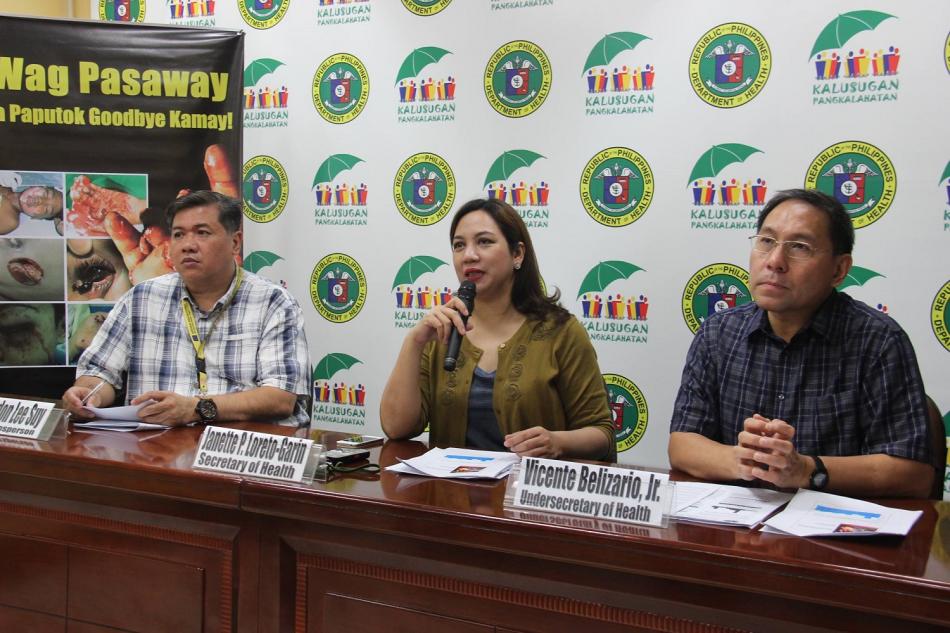
(Photo from the Department of Health’s Facebook page)
MANILA – The Department of Health (DOH) has strengthened its reporting system for the prevention of Zika virus infection by including the mosquito-borne disease among the ailments that must be reported within 24 hours to the DOH’s Epidemiology Bureau.
In a press briefing held on Monday at the DOH Media Relations Unit in Tayuman, Sta. Cruz, Manila, DOH Secretary Janette L. Garin announced that Zika virus infection is now under the Category 1 Classification of the Philippine Integrated Disease Surveillance and Response (PIDSR) System.
“This means that all suspected cases of Zika virus diseases shall be reported within 24 hours to the Epidemiology Bureau (EB) through the Regional Epidemiology Surveillance Units (RESU) in the country,” the Health chief said.
Other diseases that are under Category 1 are highly-transmittable diseases such as the Middle East Respiratory Syndrome Coronavirus (MERS-CoV), Ebola virus, and Influenza A (H1N1).
Suspected cases for Zika virus disease include patients with fever equal to or higher than 38 degrees Celsius for more than two days, conjunctivitis, skin rashes, headache, muscle pain, joint pain, body weakness, and retro orbital pain (pain behind the eyes).
Other suspected cases may include patients who have experienced symptoms within two weeks after traveling from countries with confirmed reported cases of Zika virus, and patients who have a history of Guillain-Barre syndrome.
“What we want to establish is a uniform case definition of Zika suspected cases, and guidelines to improve the monitoring of Zika infection and its possible complications,” Dr. Garin explained.
Earlier, the DOH reported that an American female visitor in the country tested positive for the Zika virus upon returning to the United States after staying for four weeks in the Philippines.
The case was confirmed by the United States Center for Disease Control and Prevention.
It was the first Zika virus case in the country after a 15-year-old boy tested positive for Zika infection in Cebu City in 2012. The patient had recovered after three weeks.
The DOH has assured that there is no outbreak of Zika cases in the country.
At present, the DOH has a total of 5,000 testing kits, or the Real-time Polymerase Chain Reaction (RT-PCR) that can be used for testing suspected Zika cases.
Secretary Garin repeated that they are doing the tests for only highly suspected cases despite persistent calls for the conduct of mass testing by the DOH.
“You can only test for the virus once there is active infection. Not all of those afflicted with the virus develop symptoms. About 80 percent would not manifest symptoms,” she said.
The Health chief related that they have already tested 827 suspected cases of Zika virus since November 2015, with all turning out to be negative.
Meanwhile, Secretary Garin has reiterated her earlier call for the public, especially pregnant women, to exercise “triple care” against mosquito bites, especially during daytime as the Zika virus is carried by the aedes aegypti mosquitoes.
“Pregnant women should be wary about mosquito bites. The effect on the result of pregnancy should not be discounted as the virus has been linked to congenital central nervous system malformation like microcephaly,” she said.
Microcephaly is a neonatal malformation which makes a baby’s head smaller than normal. It could also lead to developmental disabilities, according to the World Health Organization (WHO).
Garin again emphasized that cleanliness is still the key against mosquito-borne diseases.
She added that the public should remain vigilant and responsible in eliminating mosquito-breeding places.